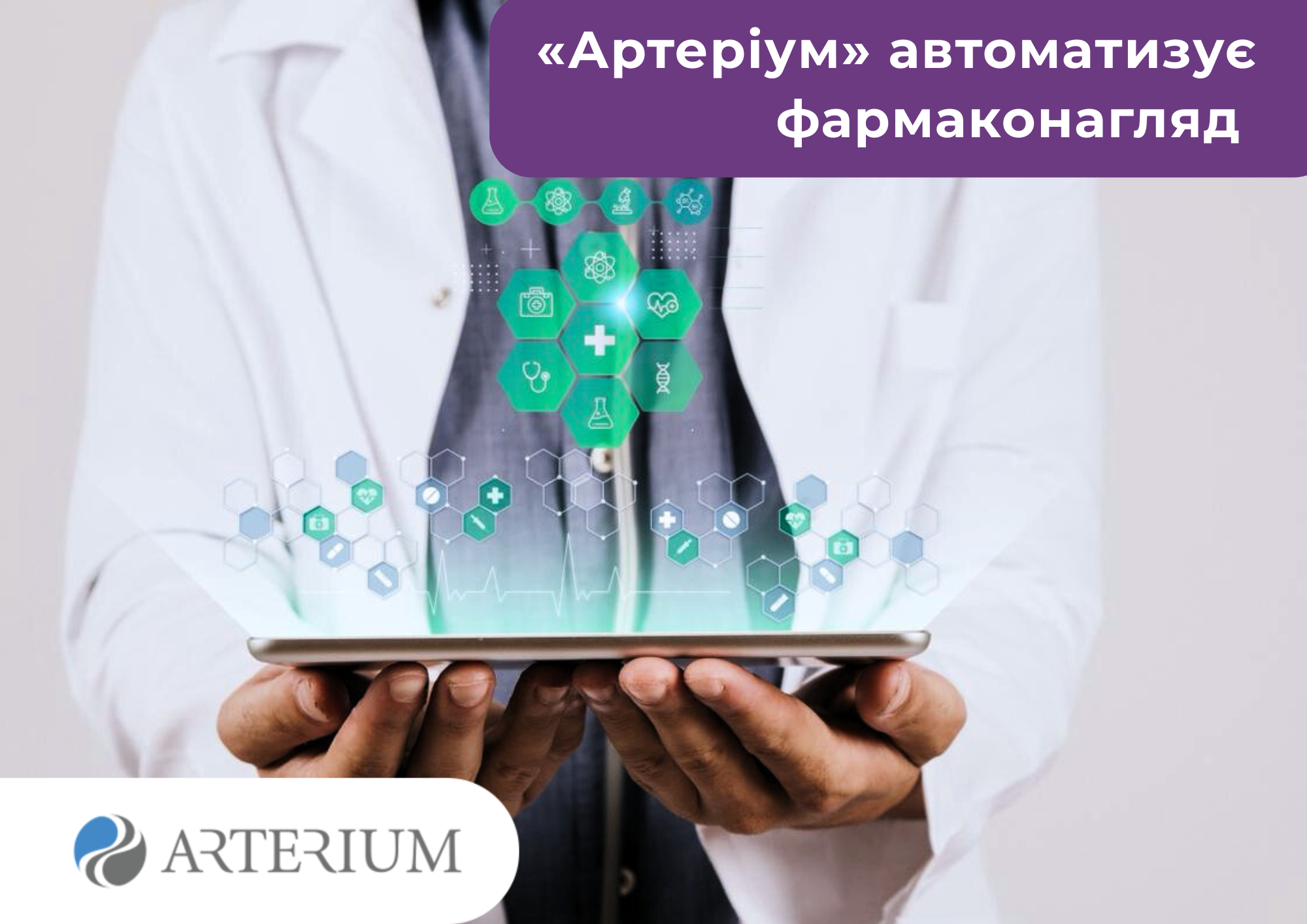- /
- News
Pharmacovigilance automation: Arterium is the first in Ukraine to implement a new approach to digitization in pharmacovigilance

We have completed the first stage of implementing a project that is unique for Ukraine — we have created an automated system for searching for updated information on the safety of medicinal products and introduced automation for processing reports of adverse reactions to medicinal products. This initiative combines digital solutions and legal requirements, taking pharmacovigilance to a new level.
New challenges — new solutions
With the tightening of regulatory requirements, the amount of information that needs to be constantly monitored and analyzed has increased significantly.
"Every week, we track updates on the safety of each active ingredient or reference product in our portfolio — that's over 900 unique search queries. Such a volume of work would require at least six specialists, but now it is primarily processed and documented by an automated system. Experts get involved at the stage when a professional assessment is needed," explains Rimma Battalova, head of pharmacovigilance and project manager.
Automated monitoring system:
· Regularly searches for updates on drug safety information and initially processes the news found,
· Generates electronic reports and accompanies work tasks for employees based on search results,
· Integrates search results with the existing computerized database of the Pharmacovigilance System,
· Processes reports of adverse reactions: the system performs an initial analysis, and a specialist joins in for expert evaluation.
"Thanks to automation, our employees with higher medical education can focus on key tasks — analysis, risk assessment, investigations, and developing new solutions. Freedom from routine work increases team motivation and allows them to fully realize their expert potential," says Rimma Battalova, head of pharmacovigilance and automation project manager.
How this has changed our work:
· Risks associated with manual data processing have been reduced and repetitive routine technical operations have been eliminated.
· We use our specialists' time more efficiently. Now they can focus on important analytical tasks.
· Financial and reputational risks have been reduced. Automation increases accuracy and reliability, minimizing the likelihood of errors.
Automating pharmacovigilance helps us better understand patient needs and strengthens partner trust. It also ensures compliance with quality standards for pharmacovigilance.
We are already seeing the effects of implementing the first phase and plan to expand the project to cover even more processes and strengthen digital transformation within the company.